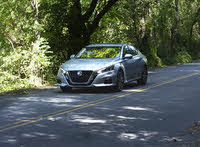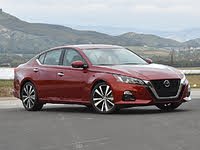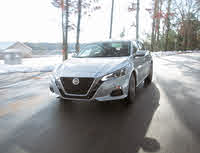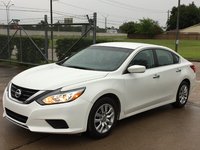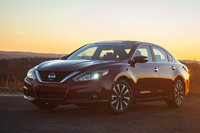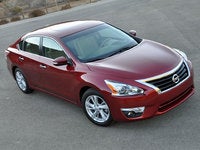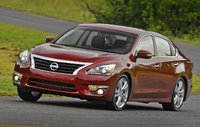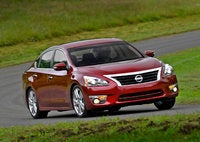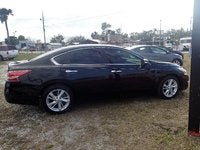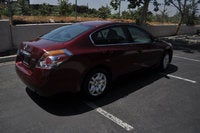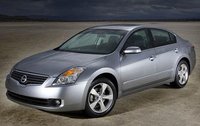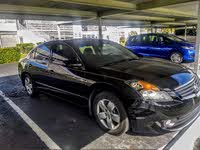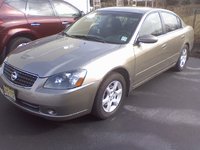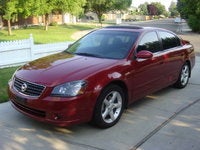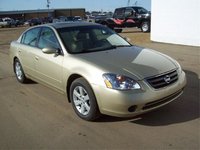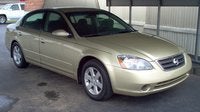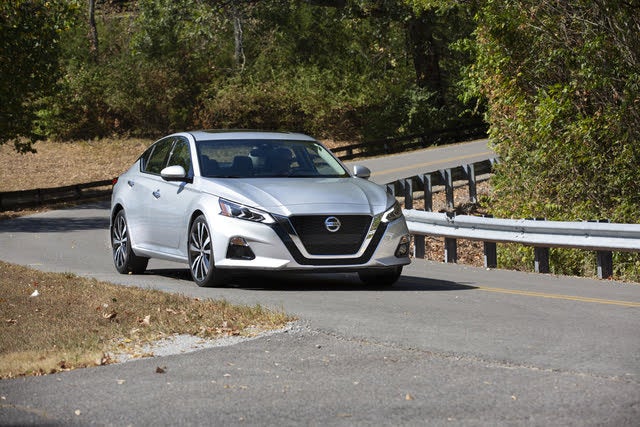Nissan Altima Model Overview
New Nissan Altima


Used Nissan Altima
Nissan Altima Questions
Warm Temp Starting Problem
so i resonantly had the water pump, and radiator replaced do to overheating and loss of water. it overheated about a good 6 or so times before i finally took it to the shop, (always stopped somewher...
Car Complaints 2018 Nissan Altima
Altima had bad history of cvt transmission failures which buyers staying away from. For 2018 they finally replaced motor and transmission - woke up. Carcomplaints.com reports there are no complaints ...
2007 Altima Leaking From Front Engine Passengers Right Side
Car bucked at slow speed; overheated with signs of coolant at fdront passengers side engine bay (close to radiator, but coolant still in reservoir. Once engine cools, drives fine but overheats once a...
2016 Nissan Altima 3.5 SL Stalls While Driving And Then At Idle.
I have a 2016 Nissan Altima 3.5 SL that has started to stall. It happens when I’m slowing down to turn at a light and when I am coming out to make that turn it stalls. I can press the gas pedal all...
Nissan Altima Overview
The Nissan Altima was introduced in 1993 to replace the Nissan Stanza. The current Altima seats five passengers and offers a 4-cylinder V6 engine and either front- or all-wheel drive. Recent CarGurus scores include 7.8 (2019) and 8 (2016).
Pros:The Altima’s advantages are its fantastic Zero Gravity seats and its competitive fuel-economy ratings.
Cons:The primary disadvantage of late-model Altimas is that, despite Nissan’s “sporty” marketing, the car really isn’t all that sporty, and most of its competitors offer more energetic acceleration and handling. Furthermore, the excellent seats seem to be a trade-off for quality in other areas, such as other cabin materials.
Model Generations
Current generation: 2019-Present
The Nissan Altima was recently redesigned for the 2019 model year. For this generation, the base 2.5-liter 4-cylinder carries over with a slight bump in power. The trusty V6 that lasted several generations is swapped out in favor of a 2.0-liter turbocharged 4-cylinder. A continuously variable transmission (CVT) comes with both, and all-wheel drive (AWD) is available with some configurations. Prices range from about $24,000 to about $32,000.
2013-2018 Nissan Altima: 5th Generation
The 2.5-liter 4-cylinder and 3.5-liter V6 carried into the fifth generation, with the 4-cylinder getting a slight power bump. A CVT came standard. The fuel-economy ratings maintained expectations. The trim-level hierarchy got a little confusing at times; though the generation began and ended with just four trim levels, some years saw different trim ladders for the 4-cylinder and V6 versions, and 2017 boasted seven trims. As for quality issues, the National Highway Traffic Safety Administration (NHTSA) notes recalls related to problems with the hood latch, leaky fuel senders, suspension build quality, brake installation, a rear door that may open unexpectedly, numerous airbag issues, and a problem with the reversing camera display on 2018 models.
2007-2012: 4th Generation
The fourth-generation Altima got another new platform, the D platform, which was an inch shorter than the previous model but maintained similar cabin volume. This platform also hosted the Maxima sedan and Murano crossover, starting in 2009. The 4-cylinder and V6 engines carried over with a slight power bump. Transmission options were a 6-speed manual and a new CVT. The Altima Coupe joined the lineup in 2008, while the Altima Hybrid joined in 2011. Again, fuel-economy numbers were in line with previous generations. According to NHTSA data, notable problems in this era included various airbag sensor issues, risk of engine fires from air filters, a faulty body control module that could result in improper tire pressure, and cracking suspension components.
2002-2006: 3rd Generation
The third generation marked the debut of a new platform, FF-L, exclusive to the North American market, and was substantially larger than the previous model. Engine options were a 2.5-liter 4-cylinder and a 3.5-liter V6. Transmission choices over the generation included a 4-speed automatic and 5- and 6-speed manuals. Fuel-economy numbers were consistent with the previous generation, averaging about 23 mpg combined across the lineup. This generation had several recalls, including numerous headlight problems, sensor failures that caused engine stalling, debris that created the risk of fire, problems with airbags (unrelated to the current industry-wide problems), and excessive engine oil consumption.
1998-2001: 2nd Generation
The second generation of the Altima was designed in California and built in Tennessee specifically for the American market. A 4-cylinder engine came with FWD and either a 5-speed manual or 4-speed automatic transmission; The powertrain received an increase from 150 to 160 hp in 2000. The manual transmission put down better fuel-economy numbers in 2001, coming in at 20 mpg city, 28 highway, and 23 combined. The trim level hierarchy through this generation consisted of the XE, GXE, SE, and GLE. The first Limited Edition Altima was introduced in 2001, which would make periodic reappearances in the coming years. Recall data from NHTSA for 2000 and 2001 shows problems with headlight quality and with the factory-fitted Firestone tires.
Shoppers Also Consider
The Nissan Altima’s sales consistently trail its closest competitors, the Honda Accord and Toyota Camry. Buyers may also consider the Mazda Mazda6, Hyundai Sonata, Kia Optima, Subaru Legacy, and Ford Fusion as alternatives.
